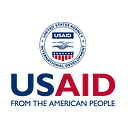Stronger Referral Networks Mean Better Health Care in Nigeria
Nasarawa State improves access to secondary care for those experiencing poverty
When Sani Mansur’s typhoid fever took a turn for the worse, the Doma Road Primary Health Care Center where he was receiving treatment initiated a referral request so he could access secondary care. Even though Mr. Mansur was enrolled in the national insurance program, he could not get specialized care without a referral authorization code from the Nasarawa State government agency responsible for issuing such codes. Regrettably, the code never arrived, and Mr. Mansur was sent home. “After five days of waiting, I lost hope,” remembered Mr. Mansur. “I had started bleeding and could no longer walk,” he added.
Until recently, many low-income patients like Mr. Mansur have had difficulty getting referrals to receive vital services at secondary care facilities when they become very sick. Across Nasarawa State, administrative challenges have disrupted the medical referrals system. At the primary care level, these included incomplete referral forms, inaccurate medical descriptions, and missing prerequisite tests. Higher-level facilities had difficulty submitting referral claims and were reluctant to accept referrals that were missing authorization codes required for reimbursement. The system had become cumbersome for providers, and a source of great frustration for patients, many of whom were too discouraged to seek the care they needed.
Revitalizing referrals
In September 2023, USAID’s Local Health System Sustainability (LHSS) project worked with the Nasarawa State health insurance agency to train 440 health care workers from primary- and secondary-level facilities in Nigeria’s minimum package of health services and its embedded referral system. Participants learned how to handle key referral functions such as requesting authorization, processing claims, managing data, and ensuring functionality of the hub-and-spoke system linking primary health care centers to secondary care facilities.
Training participants also learned that patients can be referred to the nearest health facility equipped to quickly provide the required services, irrespective of whether it was a government facility or private health care center. Health care workers who had previously only referred patients to public sector facilities saw how this flexibility would contribute to their clients’ overall quality of care. By October 2023, a month after the training, referrals from primary care providers to secondary facilities had increased by more than 235 percent across Nasarawa State, especially for pregnancy-related surgeries, diabetes, anemia, and hypertension.
Dr. Ekom Gregory Haruna, a secondary care provider at Mima Hospital in Lafia, the capital of Nasarawa State, remarked, “The training helped us understand the referral process. Before, we did not have full knowledge of how to complete the claims form and accompanying documents. This caused delays accessing our claims, but now the process goes very quickly. Although we are not there yet, we’ve made tremendous progress, and the process is easier.”
A fellow training participant agreed. “Bringing together primary and secondary health care workers to receive training on the referral system improved operations and enabled them to co-develop an efficient referral process,” said Mr. Bello Mohammed, a desk officer at Doma Road primary health care center.
Gaining trust in the health system
As clients gain trust in their local health facilities and in the improved medical referral system, enrollment and referral numbers have continued to rise across Nasarawa State.
Despite his initial reluctance to return to the Doma Road clinic, the ailing Mr. Mansur decided to give the facility another chance after officials let him know delays in their referral system had been resolved. Soon Mr. Mansur was transferred to a secondary hospital where he received specialized typhoid treatment and recovered. Now well, Mr. Mansur is sharing his story with others in his community and encouraging them to enroll in the national primary health care program. “Even those who were discouraged by delays can now return and receive care,” he said.
